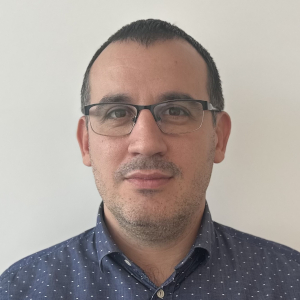Goran Kitić

Position:Head of the Center for Sensing Technologies
Academic Rank: Senior research associate
Goran Kitić works at the position of the Head of the Center for Sensing Technologies within the BioSense Institute. He received a PhD degree from the Faculty of Technical Sciences, University of Novi Sad, Serbia in 2016 on the subject of microwave soil moisture sensors. Goran Kitić developed experience in the field of different fabrication technologies (LTCC, thin&thick film technology, microfabrication, PCB, wire bonding, machining, and 3D printing) and characterization methods (electron microscopy, EDS spectroscopy, UV/Vis spectroscopy, optical profilometry, electrical measurements). His research interests are related to the development of sensors applied in agriculture, food sector and environmental protection. Some of the developed sensor prototypes involve a multispectral sensor for plant status assessment, soil moisture sensor, a device for early mastitis detection, nitrates in water detector. Besides stated, he is heavily involved in the development of a robotic system for soil sampling and analysis. His research work resulted in seven international journal publications, and numerous papers published on international conferences. During his research career, he was involved in 13 international and national projects.
Center:
CST
Themes:
1. Biosensors
2. Plant-O-Meter – low-cost portable multispectral optical device for precise plant status assessment
3. Agrobot for in-field soil analysis
4. Microwave Soil Moisture Sensor
5. Environmental monitoring applications
6. Digital Innovation Hubs
Projects:
Publications:
1. Kitić, G., Tagarakis, A., Cselyuszka, N., Panić, M., Birgermajer, S., Sakulski, D., & Matović, J. (2019). A new low-cost portable multispectral optical device for precise plant status assessment. Computers and Electronics in Agriculture, 162, 300–308. https://doi.org/10.1016/j.compag.2019.04.021
2. N. Cselyuszka, Z. Sakotic, G. Kitic, V Crnojevic-Bengin, N Jankovic „Novel Dual-band Band-Pass Filters Based on Surface Plasmon Polariton-like Propagation Induced by Structural Dispersion of Substrate Integrated Waveguide“, Scientific reports 8 (1),
8332 2018
3. V. Radonić, S. Birgermajer and G. Kitić: „Microfluidic EBG Sensor Based on Phase-Shift Method Realized Using 3D Printing Technology“, Sensors 2017, 17(4), 892-906; doi:10.3390/s17040892
4. G. Kitić, V. Crnojević Bengin: „A Sensor for the Measurement of the Moisture of Undisturbed Soil Samples“, Sensors 2013, 13, 1692-1705; doi:10.3390/s130201692
Patent:
- A method for controlling water quality in the simultaneous presence of bacteria, sludge and algae by a heuristic approach
- System and method for intelligent soil sampling
- Microwave soil moisture sensor based on phase shift method and independet of electrical conductivity of the soil